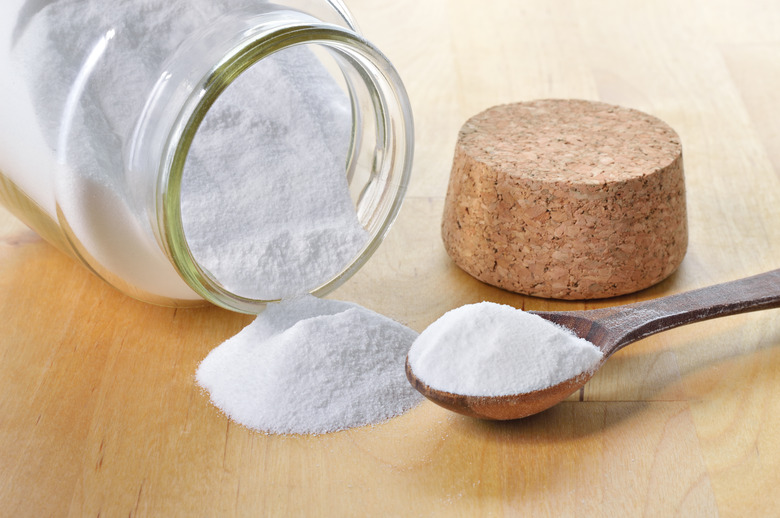What Elements Make Up Baking Soda?
Baking soda, also called sodium bicarbonate, is a common baking ingredient, cleaner, deodorizer and pH regulator. It is commonly sold as a white powder that looks similar to baking powder. Unlike baking powder, which contains acidic ingredients, however, baking soda is a single compound composed of only four elements: sodium, hydrogen, carbon and oxygen.
Sodium
Sodium
Sodium is an alkali metal that bonds readily with other elements or ions. Alone, it is a soft but violent element that burns in the air and reacts violently with water. But when bonded with a bicarbonate ion (HCO3), it creates the harmless baking soda compound used by cooks worldwide.
Hydrogen
Hydrogen
Hydrogen is the most common element in the universe and naturally occurs as an odorless, colorless, highly flammable gas. It forms highly diverse compounds, from explosive rocket fuel and caustic acids to the weak base that absorbs refrigerator odors under the common name of baking soda.
Carbon
Carbon
Carbon is an element found in all living things. It is also part of the bicarbonate ion that combines with sodium to form baking soda. Without carbon, baking soda would lack its leavening properties, since the carbon dioxide that is released when baking soda reacts with an acid forms pockets of expanding gas in dough that, when heated, make the dough rise.
Oxygen
Oxygen
Besides sustaining life as an integral part of the air you breathe and the water you drink, oxygen also forms the bicarbonate ion that creates baking soda. This ion makes baking soda a good pH regulator because it reacts with both acids and bases to create neutral salts. This characteristic makes baking soda effective for eliminating odors and for treating heartburn caused by excess stomach acid.
Cite This Article
MLA
Arnold, Kylene. "What Elements Make Up Baking Soda?" sciencing.com, https://www.sciencing.com/elements-make-up-baking-soda-8186800/. 13 March 2018.
APA
Arnold, Kylene. (2018, March 13). What Elements Make Up Baking Soda?. sciencing.com. Retrieved from https://www.sciencing.com/elements-make-up-baking-soda-8186800/
Chicago
Arnold, Kylene. What Elements Make Up Baking Soda? last modified March 24, 2022. https://www.sciencing.com/elements-make-up-baking-soda-8186800/
